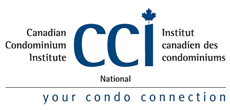13/09/2021 – Jurisdiction Alberta
Part 76 published on 01/12/2021
Court determines that limitation period for damages incurred due to common element encroachment had expired
In 2006, the Respondents had constructed a roof-top addition (and related features) without proper development or building permits. The building became a condominium complex later in 2006. The offending structure – which was located on the common elements – was not shown on the condominium plan. A few years later, in 2009, an after-the-fact development permit was issued for the particular structure.
In 2016, the condominium corporation commissioned an engineering report that showed that the roof-top structure exceeded the load-bearing capacity of the roof. Therefore, in 2016, the condominium corporation issued a Statement of Claim, seeking to recover possession of the roof area (ie. seeking removal of the rooftop addition) and also claiming “special damages”. In 2018, the City issued an order requiring removal of the rooftop addition. Five days later, the condominium corporation removed the addition and restored the roof, at substantial cost.
The Respondents argued that the condominium corporation’s claim to recover the costs incurred (to remove the roof-top addition) was “out of time” due to expiry of the applicable two-year limitation period. The Court agreed. The Court said:
It is important that the distinction between in rem and in personam claims be recognized in this context. The Limitations Act notes the distinction by making an in rem claim for the recovery of land an exception to the rule that the time for an action would otherwise be proscribed after two years. However, the ability to claim for the recovery of land does not resurrect an expired claim for in personam relief that expired long ago.
It was incumbent on the Board to decide about the rooftop structure right from the start; either by approving it and amending the condominium plan, or by denying it and acting. The Board’s decision to take action to get the land back, and thereby avoid a claim for adverse possession, does not entitle them to add on relief associated with roof remediation that could have been claimed much earlier. Calling the cost of remediation special damages does not detract from the fact that this is an in personam claim that has expired. The in rem portion of the claim is now moot, although it was not when the action was started.
Editorial Note: I was surprised by this decision. It was only in 2016 (when the engineering report was received) that the condominium corporation realized that the structure was a “problem” which couldn’t be permitted. That’s also when the condominium corporation would have realized that it couldn’t continue to acquiesce and/or to agree to any “legalization” of the offending structure – that the offending structure had to be removed (due to risks of damage). It seems to me that the condominium corporation first became aware of the injury at that time.
